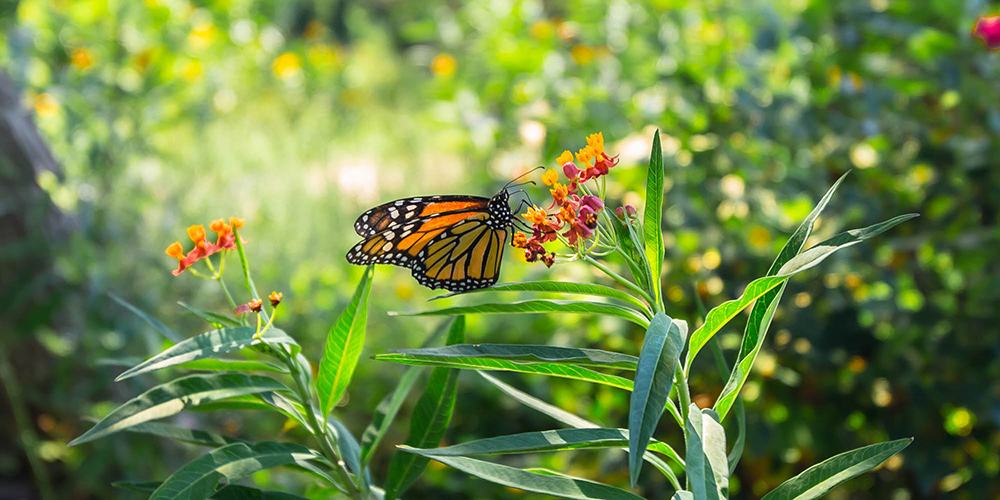Monarch Butterfly Garden Initiative

In 2016, then-Bryan Mayor Jason Bienski signed a pledge, saying he would “hereby commit to help restore habitat for the monarch and encourage our citizens to do the same, so that these magnificent butterflies will once again flourish across the continent.”
The National Wildlife Federation and the U.S. Fish and Wildlife Service created the Mayors’ Monarch Pledge, calling on government leaders to commit to specific actions to help save the threatened butterfly.
Monarch populations across North America have declined by about 90% over the past 20 years due to habitat loss caused by urban development, agricultural practices, mowing, herbicide applications, insecticides, and severe weather events. Mexico’s Commission for National Protected Areas reported a 26% decrease in the number of monarchs arriving at their winter resting grounds.
Monarch butterflies rely on two types of plants: nectar plants, which provide food for adults, and milkweed. Since monarch caterpillars feed exclusively on milkweed, female monarchs must lay their eggs on milkweed leaves for the larvae to survive. To help save monarchs, it’s essential to restore and protect their habitats.
What We Are Doing
The Parks and Recreation Department has established Monarch Waystations throughout Bryan, planting milkweed and other nectar-producing plants. These efforts also encourage community members to create their own monarch habitats in personal gardens. Monarch Waystations have been established at Bob Cherry Park, Bryan Regional Athletic Park, Camelot Park, Copperfield Park, Coulter Park, Henderson Harbor, Park Hudson Trail, Bryan Police Department, Red Bud Park, Sue Haswell Park, and Tiffany Park. Additional Monarch Waystations are located at the Nash roundabout and at the intersection of South Bryan Avenue and South Sims Avenue.
How You Can Help
If you have space in your garden, we encourage you to plant native milkweed and nectar plants to support monarchs. By doing so, you’ll be contributing to the survival of one of nature’s great wonders while enjoying a front-row seat to their metamorphosis and migration.
Garden Tips
- The prime time for planting milkweed is early June and July.
- Choose a spot with plenty of sunlight.
- Light soils are better than heavy clay soils.
- Gardens need a combination of native milkweed and nectar plants, such as Black-eyed Susan, Zinnia, Plumbago, Cassis, Goldenrod, Pipevine, Purple Mist, Passion Vine, Senna, Sunflower, Purple Coneflower, Lantana, Joe-Pye Weed, and Turk’s Cap.
- Ensure your garden is pesticide-free.
- Look for monarch caterpillars in July, August, September, and October.
Resources
- Native Plant Society of Texas: Monarch & Milkweed Resources
- Monarch Waystation Program
- Texas A&M AgriLife Extension Butterfly Gardening